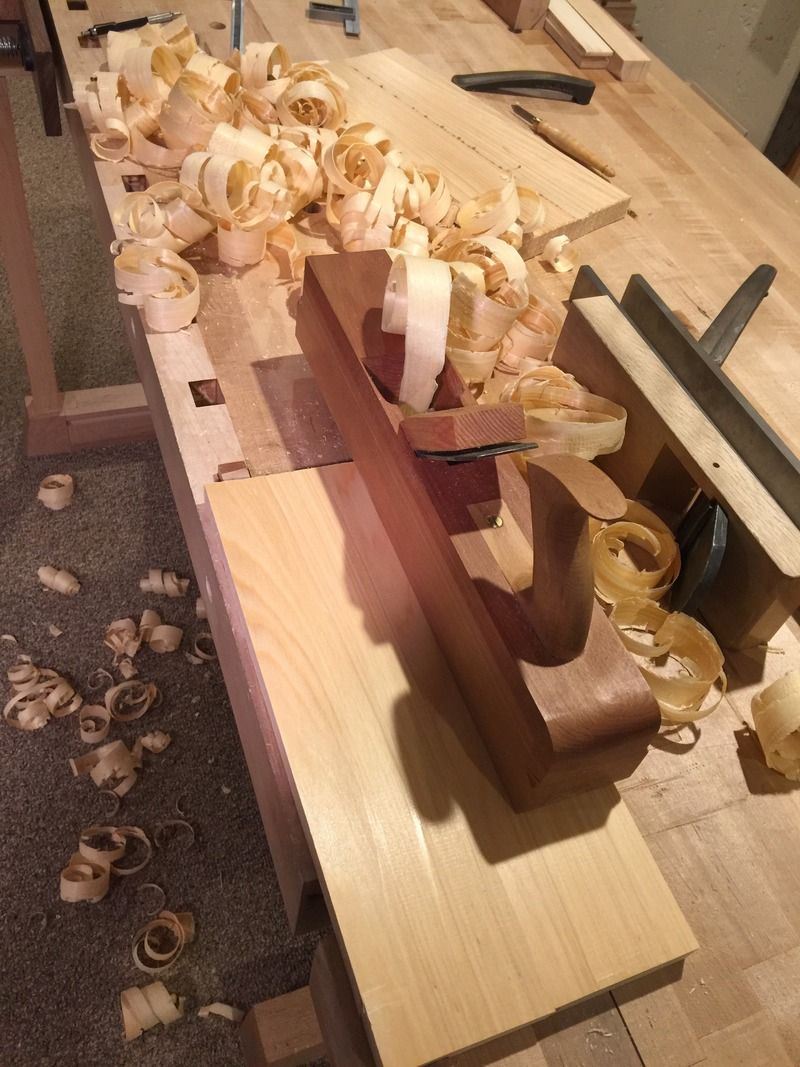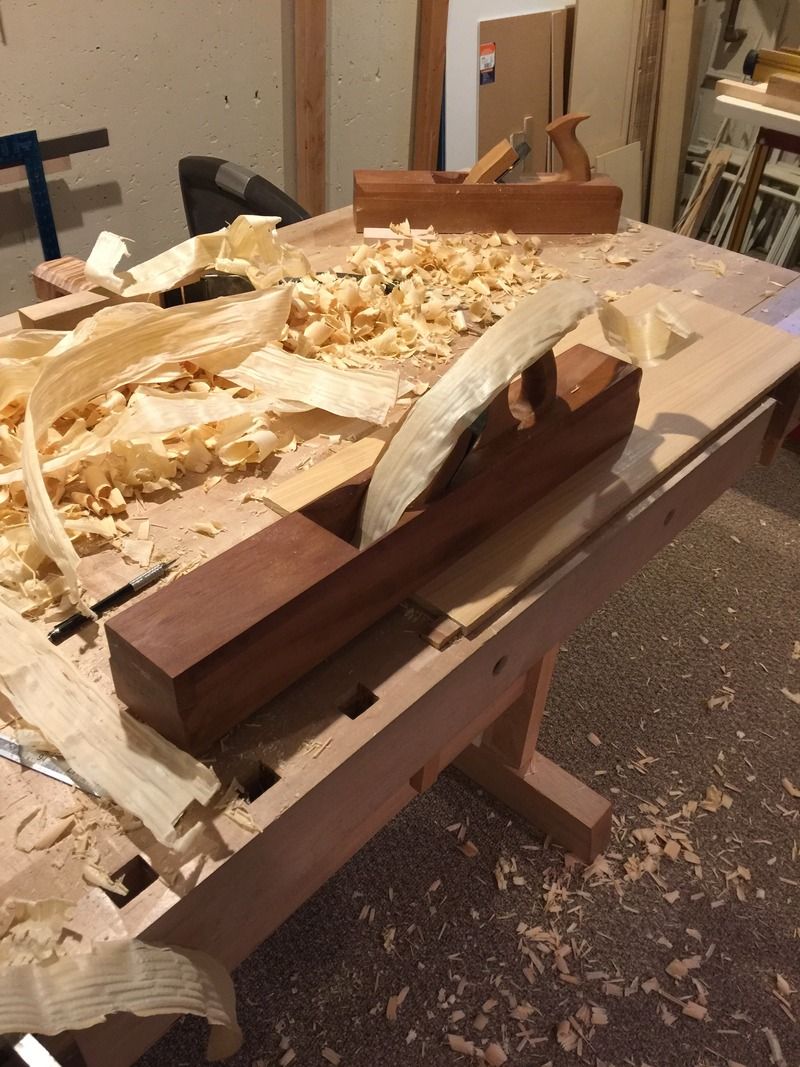The planing robe works;
Oh, and more importantly the chipbreaker worksI'm the beneficiary of Warren and David's work on this stuff, and it's much appreciated. In fact David made the wooden planes.
I'd like to make a quick point, if you are working entirely by hand it's important to consider your chipbreaker settings for your roughing and truing planes as well. The less tearout in those planes the less work you will be doing with your finish plane. There are many times when I need to take material off of a board that is on the thick side but still too thin to resaw. So these settings are critical for taking 1/8"-1/4" of material off in a hurry and doing so cleanly. When I am working with the jack and try plane often times I do not need to use the finish plane unless I'm working on a panel or an exterior face.








 Reply With Quote
Reply With Quote



 but,his fans probably disregard it anyway.
but,his fans probably disregard it anyway.
